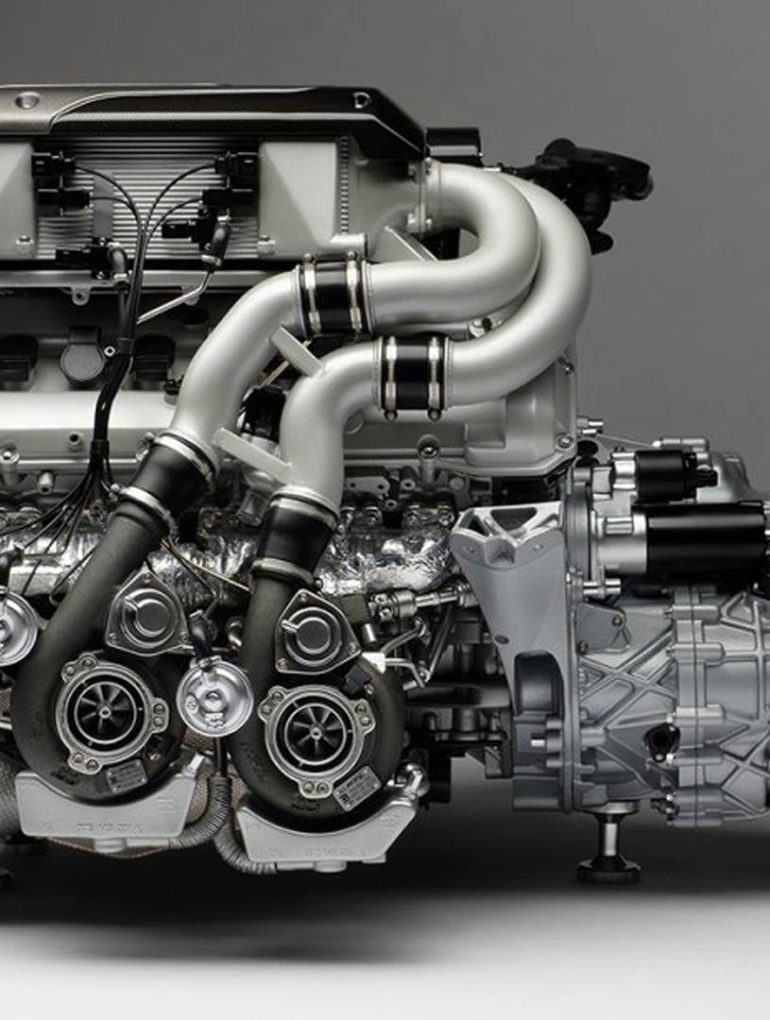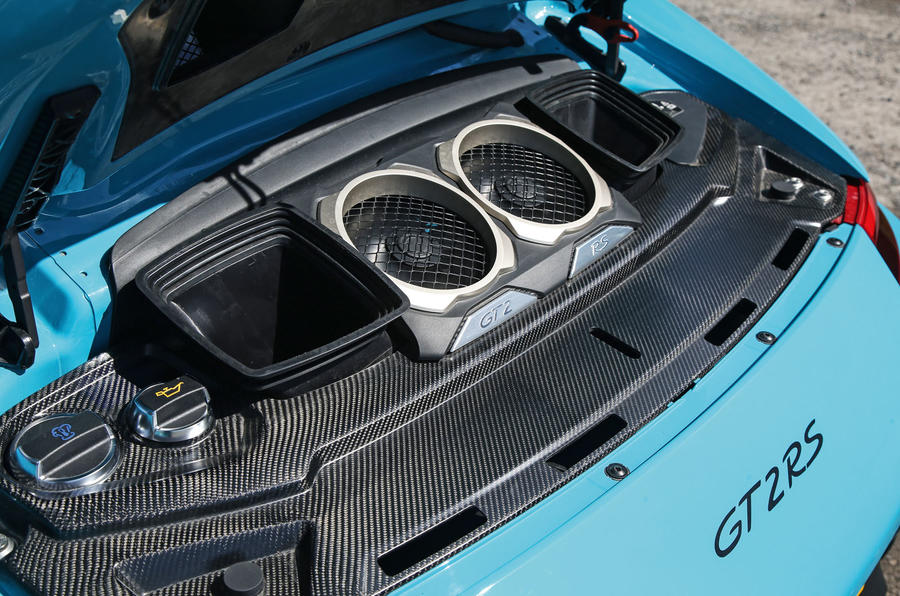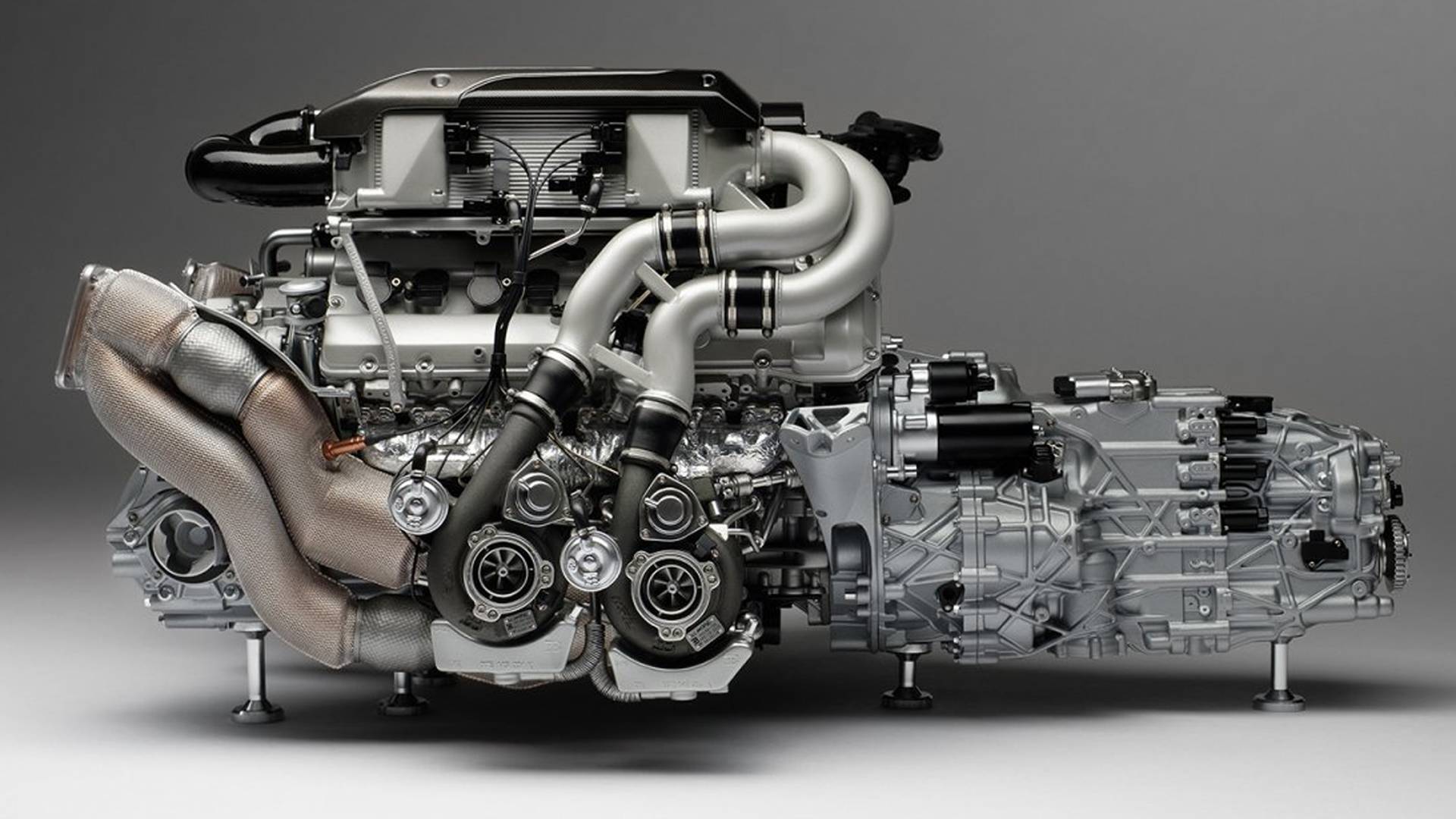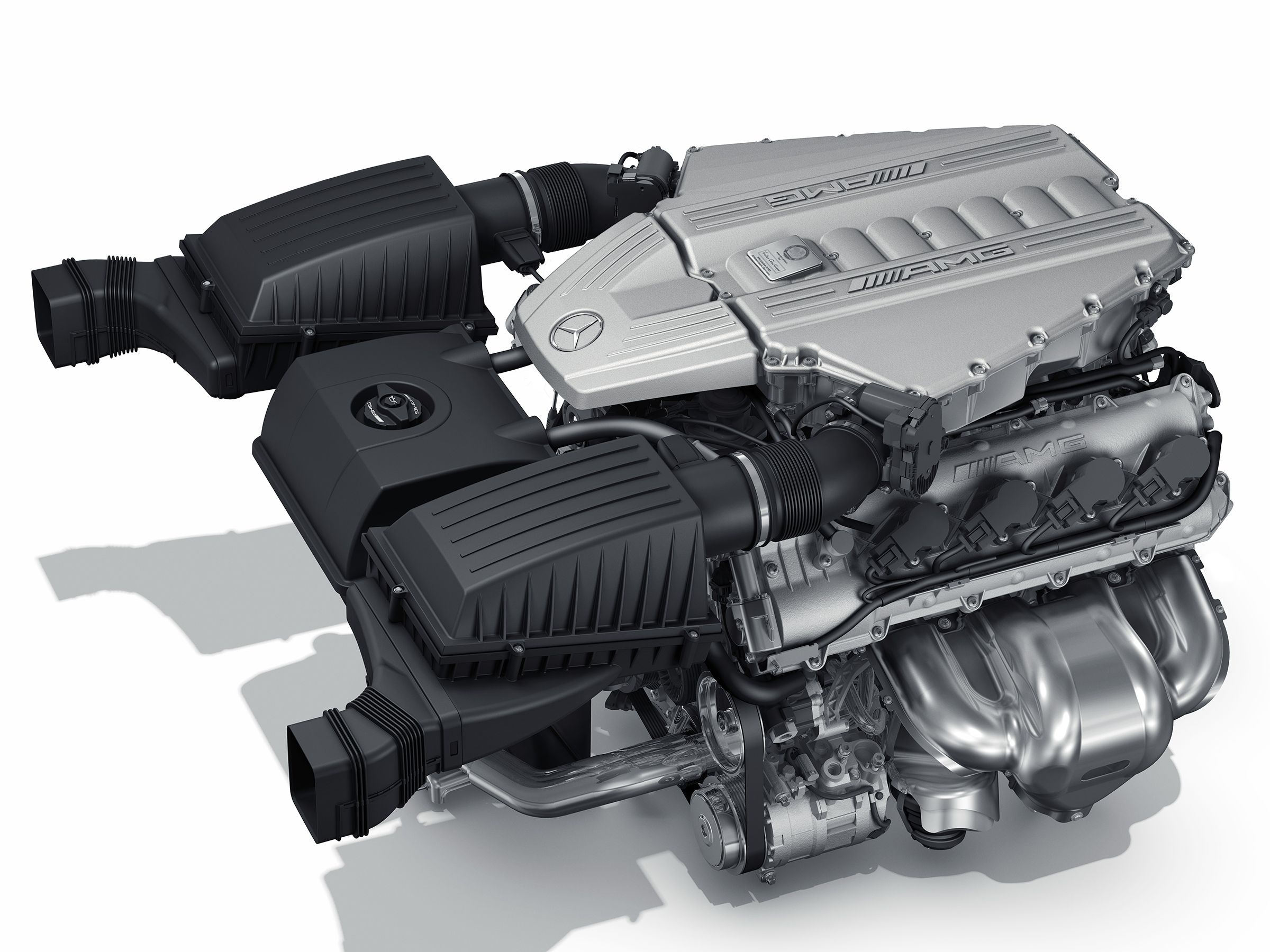Ever since turbochargers started featuring on road cars in the mid-1960s, they’ve become an integral piece of the puzzle in the global effort to reduce emissions and in most cases, also set the performance threshold higher than what was once possible. By design, turbochargers improve fuel efficiency without increasing power (and with all other things being equal) compared to a naturally-aspirated unit. Conversely, the use of turbochargers has also become the conventional method of achieving high horsepower figures in both factory and aftermarket applications.
It’s only now that we’re starting to see that pendulum swing the other way, with hybridization and electrification now taking the automotive landscape by storm. That’s not to say that turbochargers don’t remain prevalent today, nor will they cease to be in the near future; they’ve been improved as much as any other technology that has been around for the past few decades, and are capable of producing more power, emitting less emissions, and consuming less fuel than ever before. Even some of their more traditional drawbacks, such as “turbo lag”, have for the most part been factored out of the equation in modern applications.
We’ve compiled a list of the best turbocharged engines ever made. Along with limiting our selection to road-going production models, our criteria uses performance as the primary metric. While this naturally tends to favor newer and more recent technologies, we’ve also made some ‘vintage’ picks; such were their roles as revolutionaries in their day, that their presence is now immortalized by those who worship the automotive deities.
Here are 10 of the Best Turbocharged Engines Ever Produced, curated for your viewing pleasure.
Nissan RB26DETT
The 2.6L twin-turbocharged inline-6 from Nissan – the RB26DETT – has become something of a legend. It would take nothing short of the absolute best from the Japanese automaker to produce something worthy of powering a car amicably referred to as “Godzilla”, and the RB26DETT has never disappointed. While it was limited to 280 hp from the factory – thanks to the gentleman’s agreement between Japanese manufacturers to cap engine outputs at the time – the R34 Skyline GT-R was anything but docile, even when left untinkered.
The engine’s true capabilities were the worst kept secret in the industry, with a simple flash of the ECU (to effectively remove the restrictions) plus a few bolt-on performance modifications allowing the RB26DETT to produce much, much more. While the power plant has become popular as a swap option these days, it doesn’t feel quite at home in anything other than a proper Skyline; both the car and its engine are synonymous with the legacy that has been created by this iconic duo.
Porsche MDH.NA
Suffice to say, the 991 GT2 RS is the absolute peak of 6-cylinder performance. The GT2 RS in its entirety is more closely based on a Turbo S than it is to its closest GT relative, the 911 GT3 RS. After all, at the heart of the GT2 is a revamped version of the Turbo S engine (known as MDH.NA), while the GT3 has its own unique naturally-aspirated 4.0L power plant. The 3.8L flat-6 was fitted with larger variable-geometry turbos and was given an increase in peak boost to 22.5 psi, which is 24% higher than the Turbo S.
Larger intercoolers, a water-spray system, larger exhaust manifold primaries and redesigned pistons work in synergy with the aforementioned to provide the GT2 RS with 700 horsepower @ 7,000 rpm and 553 lb-ft of torque. Porsche has long buried the traditional notion of “turbo-lag” in its cars with VarioCam Plus and the GT2 RS is no different, making peak torque from 2,250 rpm to 4,000 rpm. Want to set record lap times on the Nürburgring? Just remember that it’s ‘do so at your own peril’: 700 hp in a rear-engine, rear-wheel drive car is no joke.
Bugatti 8.0L Quad-Turbocharged W16
Needless to say, the 16-cylinder engine (commonly referred to as the W16) has a lot of things going for it. For starters, it’s the only one of its kind in the world being produced by a mainstream automaker – Bugatti’s parent company: The Volkswagen Group. The quad-turbocharged unit – which is the amalgamation of two V8 engines – is the platform upon which all Bugatti hypercar models are powered.
When it first debuted in 2005, the W16 was a spectacle. In the Bugatti Veyron, it produced over 1,000 hp and could hit a mind-boggling top speed of 254 mph. This made the Veyron the fastest production sports car in the world by all meaningful metrics. This story was just beginning though, as the W16 would continue to evolve since then. Today, the engine retains the same architecture but is a much stronger, faster, and better version of itself. In its modern form, the W16 powers the likes of the Bugatti Divo and Bugatti Chiron Super Sport, where it produces 1,479 hp and 1,600 hp respectively; the latter car is able to reach a top speed of more than 400 km/h!
Mercedes-AMG M178
The modern day Mercedes-AMG line-up is blessed with their omnipotent ‘M178’ 4.0L twin-turbocharged V8, which itself deserves all the plaudits and is a shoo-in for selection. While it’s the most advanced iteration of the automaker’s V8, our personal favorite would have to be the ‘M156’ 6.2L V8 first powered the 467 hp naturally-aspirated C63 AMG. Like its successor, the M156 would feature in almost every Mercedes-AMG model of that era, including the SL63.
The ultimate version of this V8 motor would be the ‘M159’, which was equipped in the automaker’s flagship SLS supercar, producing 622 hp. The SLS has since been succeeded by the Mercedes-AMG GT Black Series, which produces 720 hp from its twin-turbocharged ‘M178’, and recently set the new production car lap record at the Nürburgring. This ultimately proves that AMG is still very much at the forefront of the perpetually evolving performance car segment, and is doing more than its fair share in helping to set the bar higher.
Toyota 2JZ-GTE
The Toyota Supra was equipped with the ubiquitous 3.0L inline-6 2JZ engine in all its models. The most recognized version of the Supra – the Turbo – possessed a twin-turbocharged engine known as the 2JZ-GTE, which was specced with up to 326 hp. The two turbochargers operated sequentially and not in parallel. This essentially meant that one of the turbochargers was designed to provide near-maximum torque as early as 1,800 rpm, while the second turbine would be engaged in a “pre-boost” mode until around 4,000 rpm where thereafter both turbochargers would be spinning at full blast.
This translated to better low-end throttle response, less ‘turbo lag’, increased boost at higher engine speeds, and a relatively linear delivery of power – all of which was difficult to achieve in unison, with the technology available at the time. The 2JZ-GTE-equipped Turbo model was able to sprint from 0-60 mph in just 4.6 seconds and complete the standing ¼ mile in an impressive 13.1 seconds. Top speed was recorded at 155 mph. Today, the 2JZ-GTE remains amicably referred-to in performance tuning and sports car culture.
McLaren M838T / M840T
Despite only producing V8-powered automobiles since as recently as 2011 (via the MP4-12C), you could argue that McLaren are now the world’s artisans of the V8 engine, and few would dispute that. After all it’s virtually all they know these days, with every single McLaren model – bar the V6-hybrid McLaren Artura – fitted with some adaptation of their M838T or M840T twin-turbocharged V8 motors.
The 3.8L M838T is found in its Sports Series range of cars, which includes the entry-level McLaren 540C and goes all the way up to the indomitable 666 hp McLaren 675 LT. The 4.0L M840T features on all of the Super Series cars, which covers the ‘700 range’ of models, plus the addition of the McLaren GT. In its Ultimate form, the 4.0L unit – dubbed the M840TR – produces 814 hp in the McLaren Senna GTR. The McLaren Speedtail hybrid ‘hyper-GT’ produces some 1,035 hp through the combination of an M840T and electric motor.
Ferrari F154
Ferrari’s F154 family of V8 engines could very well go on to become the G.O.A.T; especially when it has been scrutinized under the incredibly high standards that have been set in the modern era of automobiles. The engine is as potent as it is versatile, powering just about every flavor of Ferrari car since being introduced in 2014; the comfortable California convertible, the grand-touring Roma, the race-bred 488 Pista and F8 Tributo, and even the 986 hp SF90 Stradale hybrid hypercar.
While some continue to jeer at the F154 for its unfortunate role in closing the chapter on naturally-aspirated Ferrari V8 engines, it has on the other hand, been received with critical acclaim by those who base their verdict on performance and engineering merit. The F154B and F154C variants have dominated the awards spectrum since 2016, winning four straight ‘Best Performance Engine’ awards through to 2019. In total, the F154 has won 14 awards in the International Engine of the Year competition included a ‘Best of the Best’ award in 2018. Still not convinced? Just get behind the wheel of any one of Ferrari’s current V8 models and see what all the fuss is about…
Dodge Supercharged Hemi
Mind you, this is a supercharged engine – and the only one on this list – but we consider it to be a contemporary of our other selections. Dodge’s Hellcat series of cars have really taken the world by storm, offering almost unfathomable power in a non-exotic production vehicle – or any vehicle for that matter. It’s truly a revival of the “American muscle” movement, with the supercharged Hemi able to produce as much as 807 hp and 717 lb-ft of torque via the Dodge Challenger Hellcat Super Stock. Handling, agility, and all that other kind of stuff aside, this makes the Hellcat Challenger/Charger the quintessential American sports car which can be had for well under the 6-figure mark brand new.
The automaker is now offering the 6.2L ‘Redeye’ V8 as a crate engine (aptly nicknamed ‘Hellcrate’) through Mopar. It can be purchased at a starting price of US$21,807. The ‘Redeye’ version comes with a larger supercharger than the previous Hellcrate engine, and has been tuned for more boost, a slightly higher redline, and a host of other improvements. These are what has allowed it to improve from 707 hp and 650 lb-ft of torque, to its current 807 hp state. An absolute unit.
Bugatti 3.5L Quad-Turbocharged V12
This Bugatti engine has had a very decorated career, albeit a short one, which makes it all the more impressive. Featured exclusively on the (1991-1995) Bugatti EB110, this 3.5L quad-turbocharged V12 is responsible for some very notable distinctions. First, that would indeed make it the first quad-turbocharged engine to power a Bugatti before the W16 came along. It is also widely regarded as being one of the catalysts in the revival of the French marque, even though it failed to be directly responsible for this. It became the world’s fastest production car of its time, beating the Jaguar XJ220 in the process.
Suffice to say, it grabbed all the headlines, and really, that was the whole point. I mean, for what other purposes would the use of four turbochargers be given the green light for? Sure, it produced a whopping 553 hp and 450 lb-ft of torque, but you would have to argue that this likely could’ve been achieved with a more conventional design. After all, quad-turbocharged engines never really proliferated, and there’s probably good science behind why that’s been the case. Yes, the W16 does put that notion into some question, but technology has improved substantially since then. Nevertheless, there’s nothing un-iconic about a V12 engine with almost as many turbochargers as you can count on one hand; and we love it all the same.
Ferrari F106
Ferrari’s F106 V8 engine dates as far back as 1973, where it first featured in the Dino 308 GT4. Right from the get go, it produced an impressive 250 hp from a 2.9L naturally-aspirated engine, which featured a flat-plane crank and dual-overhead cams. As proud as they were of their creation, surely even the Ferrari engineers didn’t foresee what was to come for the F106 and the venerable roster of cars it would go on to power.
Such was the longevity and capability of the F106 unit, that it continued to be used – with significant updates and revisions along the way, including electronic fuel injection and multi-valve heads – for more than 30 years. Notable models which were equipped with the engine include the F355, 360 Modena and arguably the most famous Ferrari of them all; the Ferrari F40, which fashioned a twin-turbocharged version of the F106 producing 471 hp. It really doesn’t get more epic than that; and while some would say that the engine is riding on the coat-tails of the famous car it powers, it remains nothing short of an absolute legend on its own.














